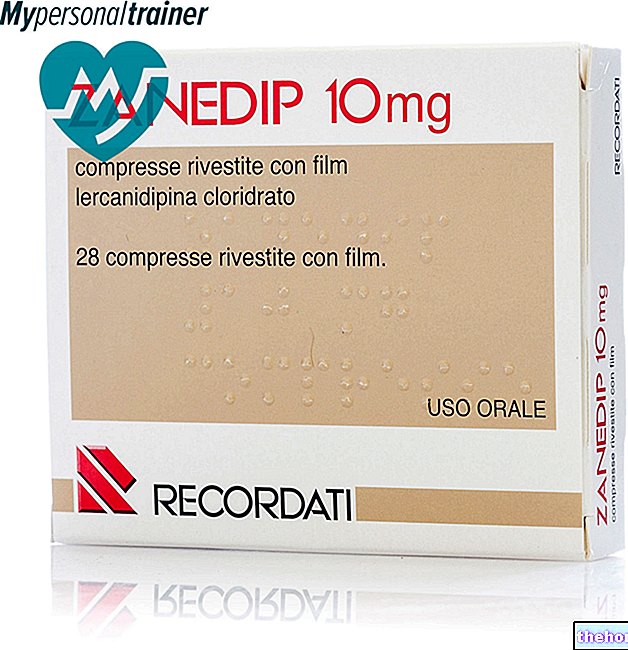Active ingredients: Fenticonazole (fenticonazole nitrate)
Lomexin 2% shampoo
Lomexin package inserts are available for pack sizes:- Lomexin 2% shampoo
- Lomexin 2% vaginal cream, Lomexin 200 mg soft vaginal capsules, Lomexin 600 mg soft vaginal capsules, Lomexin 0.2% vaginal solution
- Lomexin 2% cream, Lomexin 2% gel, Lomexin 2% cutaneous spray, solution, Lomexin 2% cutaneous solution, Lomexin 1% cutaneous powder, Lomexin 2% cutaneous powder, Lomexin 2% cutaneous foam
- Lomexin 1000 mg soft vaginal capsules
Why is Lomexin used? What is it for?
Lomexin contains the active ingredient fenticonazole nitrate.
It belongs to a group of medicines called "antifungals" for dermatological use and works against infections caused by fungi.
Lomexin is used locally (topically) for the treatment of scalp infections caused by a fungus belonging to the group of yeasts called Pityrosporum such as:
- seborrheic dermatitis
- infection called "pityriasis capitis".
Talk to your doctor if you do not feel better or if you feel worse after a short period of treatment.
Contraindications When Lomexin should not be used
Do not use Lomexin
- if you are allergic to the active substance or any of the other ingredients of this medicine
- if you are pregnant (see section "Pregnancy and breastfeeding").
Precautions for use What you need to know before taking Lomexin
Talk to your doctor or pharmacist before using Lomexin.
The use, especially if prolonged, of medicines for local use (topical use) can cause allergic reactions (sensitization phenomena).
In this case, stop the treatment and consult your doctor who will recommend an appropriate therapy.
If you have undergone prolonged local treatment with medicines called "corticosteroids" wait about fifteen days before applying Lomexin shampoo.
Avoid contact with eyes.
If the product comes into contact with the eyes, rinse thoroughly with water.
Interactions Which drugs or foods can modify the effect of Lomexin
Tell your doctor or pharmacist if you are using, have recently used or might use any other medicines.
There are no known interactions of other medicinal products with Lomexin.
Warnings It is important to know that:
Pregnancy and breastfeeding
If you are pregnant or breast-feeding, think you may be pregnant or are planning to have a baby, ask your doctor or pharmacist for advice before using this medicine.
The use of Lomexin is not recommended in pregnancy, although skin absorption of fenticonazole is rather poor.
Driving and using machines
Lomexin does not affect the ability to drive or use machines.
Lomexin contains propylene glycol
It can cause skin irritation.
Dose, Method and Time of Administration How to use Lomexin: Posology
Always use this medicine exactly as described in this leaflet or as directed by your doctor or pharmacist.
If in doubt, consult your doctor or pharmacist. Wash the areas affected by the infection with Lomexin shampoo, let it act for about 3-4 minutes and then rinse thoroughly.
Do the treatment twice a week for 2-4 weeks
Overdose What to do if you have taken too much Lomexin
If you use more Lomexin than you should
In case of accidental ingestion / intake of an overdose of Lomexin, notify your doctor immediately or go to the nearest hospital. If you have any further questions on the use of Lomexin, ask your doctor or pharmacist.
If you forget to use Lomexin
Do not use a double dose to make up for a forgotten dose.
If you stop taking Lomexin
If you have any further questions on the use of this medicine, ask your doctor or pharmacist.
Side Effects What are the side effects of Lomexin
Like all medicines, this medicine can cause side effects, although not everybody gets them.
When used as recommended, Lomexin is only poorly absorbed and no undesirable effects affecting the whole body (systemic effects) are expected. Prolonged use of local (topical) medicinal products may cause sensitization phenomena (see section " Warnings and Precautions ").
The following side effects have been observed with Lomexin:
Very rare (may affect up to 1 in 10,000 people)
- redness of the skin (erythema)
- itch
- skin rash (rash)
- rash and redness of the skin (erythematous rash)
- skin irritation
- burning sensation of the skin.
Reporting of side effects
If you get any side effects, talk to your doctor or pharmacist. This includes any possible side effects not listed in this leaflet. You can also report side effects directly via the national reporting system at https://www.aifa.gov.it/content/segnalazioni-reazioni-avverse. By reporting side effects you can help provide more information on safety. of this medicine.
Expiry and Retention
This medicine does not require any special storage conditions.
Keep this medicine out of the sight and reach of children.
Do not use this medicine after the expiry date which is stated on the carton after "EXP". The expiry date refers to the last day of that month.
Do not throw any medicines via wastewater or household waste. Ask your pharmacist how to throw away medicines you no longer use. This will help protect the environment.
What Lomexin contains
- The active ingredient is fenticonazole nitrate. 100 g of solution contains 2 g of fenticonazole nitrate.
- The other ingredients are propylene glycol, sodium lauryl ether sulfate solution, alkylamidobetaine solution, purified water.
What Lomexin looks like and contents of the pack
Lomexin comes in the form of a 2% shampoo. The contents of the package is a bottle of 100 g
Source Package Leaflet: AIFA (Italian Medicines Agency). Content published in January 2016. The information present may not be up-to-date.
To have access to the most up-to-date version, it is advisable to access the AIFA (Italian Medicines Agency) website. Disclaimer and useful information.
01.0 NAME OF THE MEDICINAL PRODUCT
LOMEXIN
02.0 QUALITATIVE AND QUANTITATIVE COMPOSITION
Lomexin 2% vaginal cream
100 g of vaginal cream contains 2 g of fenticonazole nitrate.
Excipients with known effects:
100 g of vaginal cream contains 5 g of propylene glycol, 3 g of cetyl alcohol, 1 g of hydrogenated lanolin.
Lomexin 0.2% vaginal solution
100 ml of vaginal solution contains 0.2 g of fenticonazole nitrate.
Excipients with known effects:
100 ml of vaginal solution contain 10 g of propylene glycol, 0.01 g of benzalkonium chloride.
Lomexin 200 mg soft vaginal capsules
Each soft vaginal capsule contains 200 mg of fenticonazole nitrate.
Excipients with known effects:
Each soft vaginal capsule contains 0.80 mg of sodium ethyl parahydroxybenzoate, 0.40 mg of sodium propyl parahydroxybenzoate.
Lomexin 600 mg soft vaginal capsules
Each soft vaginal capsule contains 600 mg of fenticonazole nitrate.
Excipients with known effects:
Each soft vaginal capsule contains 1 mg of sodium ethyl parahydroxybenzoate, 0.50 mg of sodium propyl parahydroxybenzoate.
Lomexin 1000 mg soft vaginal capsules
Each soft vaginal capsule contains 1000 mg of fenticonazole nitrate.
Excipients with known effects:
Each soft vaginal capsule contains 1.60 mg sodium ethyl parahydroxybenzoate, 0.70 mg sodium propyl parahydroxybenzoate.
For the full list of excipients, see section 6.1.
03.0 PHARMACEUTICAL FORM
Vaginal cream.
Vaginal solution.
Soft vaginal capsules.
04.0 CLINICAL INFORMATION
04.1 Therapeutic indications
Lomexin 2% vaginal cream, Lomexin 200 mg and 600 mg soft vaginal capsules, Lomexin 0.2% vaginal solution:
Candidiasis of the genital mucous membranes (vulvovaginitis, affected, infectious fluor).
Lomexin 1000 mg soft vaginal capsules:
Vaginal trichomoniasis.
Vaginal infections sustained in mixed form by Trichomonas vaginalis And Candida albicans.
Candidiasis of the genital mucous membranes (vulvovaginitis, affected, infectious fluor).
04.2 Posology and method of administration
Lomexin 2% vaginal cream - introduce the contents of the applicator (about 5 g) deeply into the vagina. It is applied by means of an applicator (washable and reusable) before going to bed, if necessary also in the morning.
In order to avoid reinfection, the simultaneous local treatment (glans penis and foreskin) of the partner with Lomexin cream is recommended.
Lomexin 0.2% vaginal solution - 1-2 vaginal irrigations per day, for 7 days, as adjuvant therapy to the other formulations for the prevention of relapses.
Lomexin 200 mg soft vaginal capsules - 1 soft vaginal capsule of 200 mg in the evening before bedtime, for three days, depending on the judgment of the doctor.
Lomexin 600 mg soft vaginal capsules - 1 vaginal soft capsule of 600 mg in the evening in a single dose. If symptoms persist, a second administration can be repeated after 3 days.
Lomexin 1000 mg soft vaginal capsules - in vaginal infections from Trichomonas and in the mixed ones (Trichomonas + Candida) it is recommended to apply 1 vaginal soft capsule of 1000 mg followed by a second application after 24 hours, if necessary.
In infections with Candida: 1 vaginal soft capsule of 1000 mg in the evening in a single dose. If symptoms persist, a second administration can be repeated after 3 days.
The soft vaginal capsules are inserted deeply into the vagina (up to the level of the fornixes).
04.3 Contraindications
Hypersensitivity to the active substance or to any of the excipients listed in section 6.1.
Pregnancy (see section 4.6).
04.4 Special warnings and appropriate precautions for use
At the time of intravaginal introduction, a modest burning sensation may be found which disappears rapidly.
The use, especially if prolonged, of products for topical use, can give rise to sensitization phenomena. In this case, stop the treatment and consult the doctor to institute suitable therapy.
Soft vaginal capsules or vaginal cream should not be used with barrier contraceptives (see section 4.5).
Important information about some of the ingredients:
Lomexin 2% vaginal cream and Lomexin 0.2% vaginal solution contain propylene glycol. They can cause skin irritation.
Lomexin 2% vaginal cream contains cetyl alcohol. May cause local skin reactions (e.g. contact dermatitis).
Lomexin 2% vaginal cream contains hydrogenated lanolin. May cause local skin reactions (e.g. contact dermatitis).
Lomexin 0.2% vaginal solution contains benzalkonium chloride. Irritating, may cause local skin reactions.
Lomexin 200 mg soft vaginal capsules, Lomexin 600 mg soft vaginal capsules and Lomexin 1000 mg soft vaginal capsules contain sodium ethyl parahydroxybenzoate and sodium propyl parahydroxybenzoate. They can cause allergic reactions (even delayed).
04.5 Interactions with other medicinal products and other forms of interaction
Fatty excipients and oils contained in vaginal soft capsules or vaginal cream may harm latex contraceptives (see section 4.4).
04.6 Pregnancy and lactation
Although vaginal absorption of fenticonazole is rather poor, it is recommended not to use the medicine during pregnancy.
04.7 Effects on ability to drive and use machines
Lomexin does not affect the ability to drive or use machines.
04.8 Undesirable effects
When used as recommended, Lomexin is only poorly absorbed and no systemic side effects are expected. Prolonged use of topical products can cause sensitization phenomena (see section 4.4).
Undesirable effects are presented in the table below, listed by MedDRA system organ class and frequency: very common (≥1 / 10); common (≥1 / 100,
Reporting of suspected adverse reactions
Reporting of suspected adverse reactions occurring after authorization of the medicinal product is important as it allows continuous monitoring of the benefit / risk balance of the medicinal product. Healthcare professionals are asked to report any suspected adverse reactions via the national reporting system. "Street address www.aifa.gov.it/responsabili.
04.9 Overdose
No cases of overdose have been reported.
05.0 PHARMACOLOGICAL PROPERTIES
05.1 Pharmacodynamic properties
Pharmacotherapeutic group: gynecological antimicrobials and antiseptics; imidazole derivatives.
ATC code: G01AF12.
Lomexin is a broad spectrum antifungal.
- In vitro: high fungistatic and fungicidal activity on dermatophytes (all species of Trichophyton, Microsporum, Epidermophyton), on the Candida albicans and on the other agents of fungal infections of the skin and mucous membranes.
An "activity inhibiting the secretion of acid proteinases of Candida albicans.
- In vivo: healing in 7 days of cutaneous mycoses caused by dermatophytes and Candida in the guinea pig.
Lomexin also has antibacterial action on Gram positive microorganisms.
Fenticonazole has also been shown to be active, both in vivo and in vitro on Trichomonas vaginalis.
Mechanism of action
Presumed mechanism of action: block of oxidizing enzymes with accumulation of peroxides and necrosis of the fungal cell; direct action on the membrane.
05.2 Pharmacokinetic properties
Pharmacokinetic tests showed a completely negligible transcutaneous absorption, both in animals and in humans.
05.3 Preclinical safety data
Acute toxicity
LD50 mouse: os> 3000 mg / kg; i.p. 1276 mg / kg (M), 1265 mg / kg (F);
LD50 rat: os> 3000 mg / kg; s.c.> 750 mg / kg; i.p. 440 mg / kg (M), 309 mg / kg (F).
Chronic toxicity: 40-80-160 mg / kg / day os for 6 months in the rat and dog were well tolerated, except for mild or moderate general toxicity manifestations (in the rat an increase in liver weight at a dose of 160 mg / kg, however, without histopathological changes and in the dog a transient increase in SGPT at doses of 80 and 160 mg / kg associated with an increase in liver weight).
Lomexin does not interfere with the functions of the female and male sexual organs nor does it have effects on the early stages of reproduction. From the studies of reproductive toxicity as well as for other imidazoles, an embryolethal effect appeared at high oral doses (> 20 mg / kg), 20-60 times higher than the dose absorbed vaginally in women. Lomexin did not show teratogenic properties in rats and rabbits.
Lomexin was not mutagenic in 6 mutagenicity tests.
Tolerability of Lomexin was satisfactory in guinea pigs and rabbits. The results obtained in the dwarf pig, whose skin is morphologically and functionally similar to that of humans and generally shows a marked sensitivity to various irritants, were excellent.
Lomexin showed no evidence of sensitization, phototoxicity and photoallergy.
06.0 PHARMACEUTICAL INFORMATION
06.1 Excipients
Lomexin 2% vaginal cream
Propylene glycol
Hydrogenated lanolin
Refined almond oil
Polyglycol ester of fatty acids
Cetyl alcohol
Glyceryl monostearate
Sodium edetate
Purified water.
Lomexin 0.2% vaginal solution
Propylene glycol
Benzalkonium chloride
Alkylamidobetaine solution
Purified water.
Lomexin 200 mg soft vaginal capsules
Triglycerides of saturated fatty acids
Anhydrous colloidal silica.
Constituents of the shell:
Jelly
Glycerine
Titanium dioxide
Sodium ethyl parahydroxybenzoate
Sodium propyl parahydroxybenzoate.
Lomexin 600 mg soft vaginal capsules
Liquid paraffin
White petroleum jelly
Soy lecithin.
Constituents of the shell:
Jelly
Glycerine
Titanium dioxide
Sodium ethyl parahydroxybenzoate
Sodium propyl parahydroxybenzoate.
Lomexin 1000 mg soft vaginal capsules
Liquid paraffin
White petroleum jelly
Soy lecithin.
Constituents of the shell:
Jelly
Glycerine
Titanium dioxide
Sodium ethyl parahydroxybenzoate
Sodium propyl parahydroxybenzoate.
06.2 Incompatibility
Not relevant.
06.3 Period of validity
3 years.
06.4 Special precautions for storage
None.
06.5 Nature of the immediate packaging and contents of the package
Lomexin 2% vaginal cream: aluminum tube internally coated with paint with 1 applicator.
78 g tube with 1 applicator.
Lomexin 0.2% vaginal solution: plastic bottles with disposable applicator.
5 bottles of 150 ml.
Lomexin 200 mg soft vaginal capsules: PVC / PVDC and aluminum blisters.
Box containing 6 capsules.
Lomexin 600 mg soft vaginal capsules: PVC / PVDC and aluminum blisters.
Carton containing 2 capsules.
Lomexin 1000 soft vaginal capsules: PVC / PVDC and aluminum blisters.
Carton containing 2 capsules.
Not all pack sizes may be marketed.
06.6 Instructions for use and handling
Lomexin 2% vaginal cream
Follow the instructions shown in the diagram below.
Make sure that the applicator is always perfectly clean.
After each use, wash it thoroughly with warm water and soap.
If your doctor recommends sterilization of the applicator for special reasons, comply with his guidelines.
However, do not use hot water over 50 ° C or organic solvents.
Then dry the applicator and store it in its container.
Instructions for use of Lomexin 2% vaginal cream :
1. Screw the applicator onto the tube instead of the cap.
2. Squeeze the tube lightly at its lower end to fill the applicator. If the plunger offers any resistance, pull it gently. Unless otherwise directed by your doctor, the applicator should be completely filled.
3. Remove the applicator from the tube which must be immediately closed with the cap.
4. In a lying position, with the knees raised and spread, gently introduce the applicator into the vagina as deeply as possible. Push the plunger completely. Then withdraw the applicator without touching the plunger.
Instructions for use of Lomexin 0.2% vaginal solution :
- Hold the bottle by the knurled ring and fold the cap until the safety seal breaks.
- Remove the cannula by holding it through the cap until it clicks into place.
- The cannula can be adjusted according to needs. Gently introduce the cannula into the vagina and press the walls of the bottle with more or less intense pressure, in order to completely empty it; a special valve does not allow the solution to return to the bottle.
Irrigation should preferably be performed in a lying position.
A slow irrigation promotes better medicated cleansing.
No special instructions for other Lomexin formulations.
Unused medicine and wastes derived from this medicine must be disposed of in accordance with local regulations.
07.0 MARKETING AUTHORIZATION HOLDER
RECORDATI Chemical and Pharmaceutical Industries S.p.A. - Via M. Civitali, 1 - 20148 Milan.
08.0 MARKETING AUTHORIZATION NUMBER
Lomexin 2% vaginal cream - 78 g tube with 1 applicator A.I.C. n. 026043277
Lomexin 0.2% vaginal solution - 5 bottles 150 ml A.I.C. n. 026043190
Lomexin 200 mg soft vaginal capsules - 6 A.I.C. n. 026043101
Lomexin 600 mg soft vaginal capsules - 2 capsules A.I.C. n. 026043152
Lomexin 1000 mg soft vaginal capsules - 2 capsules A.I.C. n. 026043202
09.0 DATE OF FIRST AUTHORIZATION OR RENEWAL OF THE AUTHORIZATION
Date of first authorization: 10 May 1986
Date of most recent renewal: May 31, 2010
10.0 DATE OF REVISION OF THE TEXT
30/09/2015




























